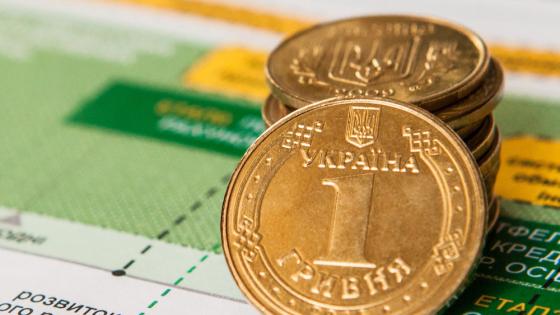Editors' note: This column is part of the Vox debate on the economic consequences of war.
More than a month has passed since the beginning of Russia’s full-scale offensive in Ukraine. Ukraine has lost many civilians and suffered massive destruction of its infrastructure. The loss of children's lives is even harder to process: as of 26 March, 136 have died and nearly 200 have been wounded, many severely.1
Despite the severe destruction in the country, the Ukrainian army is fighting fiercely and all major cities remain in Ukrainian hands, except perhaps Kherson. Encouraged by these developments and support from the entire world, Ukrainians have begun thinking of how they will rebuild their country and how Russia will pay for it. The question I want to discuss is how much this would cost.
Current debate on the economic consequences of Russia's war in Ukraine focuses on measures that can be taken against Russia (e.g. Chaney et al. 2022 on estimating the impact to EU economies and world economy, Bachmann et al. 2022, and the current state of Ukraine's economy as in Skok 2022). I focus on estimating economic damages suffered by Ukraine.
Estimation of the potential growth path
In this column, I aim to set expectations regarding the order of magnitude of the economic loss inflicted by Russia on Ukraine. I provide a lower bound and do not aim to provide a precise estimate. The framework used to calculate the loss is straightforward. Think of a country as a large company with multiple plants. In normal times, these plants produce output (i.e. GDP). If some of those plants were blocked by a military group hired by a competitor, one would seek damages from the sponsor for all the lost income. I estimate the damages inflicted by the Russian invasion.
An estimate can be obtained by comparing the actual path of Ukraine's output with what it could have been had Russia not invaded. Such a ‘what if’, or potential growth scenario, can be constructed by finding Eastern European economies to which the Ukrainian economy is most closely related in terms of pre-war growth rates. This approach yields a lower-bound estimate of the costs because the loss of output measures only the direct and reversible effects. It does not count the loss of life (including flight MH13 in 2015), loss of real estate, agricultural lands turned mine-fields, infrastructure, and lost productivity from the war-affected population, among other factors.
To find a potential path of Ukraine's GDP growth, we analysed the full sample of Eastern European economies from the IMF's October 2021 World Economic Outlook database.2 To begin, it must be recognised that the war started eight years ago, not in 2022. Therefore, we estimated a linear relationship between Ukraine's GDP growth rate and other economies' growth rates using data from 1999 (post the Ukraine crisis) to 2013 (before the 2014 Russian invasion of Ukraine). Starting from a regression with all countries considered as potential proxies, we removed the least statistically significant economies iteratively until reaching a parsimonious specification. While this is admittedly a short period, the model displays a strong statistical fit and it explains 86.4% of the variation of Ukraine's GDP growth. As expected, the model puts a large weight on Poland, Ukraine's neighbour and its largest trading partner in Europe according to the European Commission.3
Using Poland's and Estonia's growth rates as drivers for Ukraine's potential growth during the 2014-2021 period is a conservative approach because Poland and Estonia have been affected by the 2014 Russian invasion of Ukraine. We use the estimated model to predict Ukraine's GDP growth for 2014-2021. The model's prediction for the potential growth for 2014 and 2015 differs substantially from Ukraine's actual growth during 2014-2015. This discrepancy is the result of Russia's aggression that started in 2014. For the 2016-2021 period, we find that Ukrainian GDP growth predicted from the model based on Poland and Estonia closely follows Ukraine’s actual GDP growth. It reflects a relative strength of the Ukrainian economy prior to the 2022 war, even though it is not part of the EU like Poland and Estonia. The slowdown in growth in 2014-2015 results in a one-time downward level shift in the GDP path.
Given these findings, to construct Ukraine's potential GDP path, we use the model's estimates based on Poland’s and Estonia's growth rates for the 2014-2021 period and the pre-2022-war IMF projections of Ukraine's GDP growth rate for the period after 2021.
In addition to the potential path, we need an estimate of the impact of the 2022 attack on the output in 2022. We conservatively assume that the Russian attack that started in February 2022 will lead to a 30% GDP drop in 2022. Additionally, we assume that the drop represents a downward shift to a new output level and that the economy continues on the pre-2022-war IMF projected growth path. That is, that the economy will not be able to catch up with its pre-2022-attack growth trajectory soon; instead, it will be following a lower level path for at least five years. This is consistent with Ukraine's experience after the 2014 invasion.
Results
We compare the potential path of Ukraine's GDP from 2014 onward to its actual path during 2014-2021 and the projected path following the full-scale invasion in February 2022. Figure 1 shows three lines. Prior to 2014, all lines show actual data. The blue line at the top shows the potential path of Ukraine's GDP from 2014 onward had the invasion in 2014 and the war in 2022 not happened. It uses the ‘Poland+Estonia’ proxy approach during 2014-2021 and the IMF pre-2022 projections for Ukraine thereafter. The yellow line shows the actual path of Ukraine's GDP after the 2014 invasion and up to 2022 and the potential path after 2022, as projected by the IMF had the war in 2022 not happened. Finally, the red line at the bottom of the figure shows the actual path of Ukraine's GDP after the 2014 invasion and up to 2022 and the projected path after the 2022 war, which assumes a 30% GDP drop in 2022, and the IMF pre-war growth projections thereafter.
Figure 1 Alternative paths of Ukraine’s GDP and ‘current dollar’ losses
Notes: Actual data before 2014. Blue line: projections based on the proxy approach during 2014-2021 and IMF projections thereafter. Yellow line: actual data until 2021 and IMF projections. Red line: actual data until 2021, a 30% GDP decline in 2022, and IMF projections thereafter.
The estimated annual loss in GDP from the 2014 invasion is measured by the vertical distance between the blue and yellow lines (see labels along the yellow line) in Figure 1. A simple addition of the yearly losses from 2014 to 2021 gives the cumulative loss of $580 billion. Assuming that these monies were invested into the US 30-year Treasury notes, one gets the aggregate loss of $630 billion. This number is over 50 times larger than the largest assistance of $13.6 billion received from the US. The expected damage from the 2014 invasion between 2022 and 2026 is an additional $410 billion.
The expected annual loss in GDP from the 2022 war is measured by the vertical distance between the yellow and red lines (see labels along the red line). The present discounted value of the losses between 2022 and 2026 is $270 billion. If the drop in GDP in 2022 is 50% rather than the assumed 30%, the cumulative damage is $445 billion.
Thus, the trillion-dollar question has a trillion-dollar answer: Russia is expected to cause damage of $1.36 trillion. Of this number, $680 billion are losses incurred between 2014 and 2021, $155 billion of losses are expected in 2022, and the remaining $525 billion during 2023-2026. This is admittedly a simplified approach. But, even if it included a substantial error, one needs to include ‘trillion’ in the negotiation vocabulary. Unfortunately, we think that this number is just a lower bound, and the loss is growing every day. And unless there is an unusual spur in Ukraine's growth relative to the pre-war potential, the loss will continue to grow after the five years. Fortunately, with oil prices at $100, Russia can repay using 25% of its oil revenues in ‘just’ 15 years. It would take only 11 years if $300 billion of the Central Bank of Russia's reserves frozen abroad were netted out.
Author’s note: I thank my economist friends for useful comments.
References
Bachmann, R, D Baqaee, C Bayer, M Kuhn, A Löschel, B Moll, A Peichl, K Pittel and M Schularick (2022), “What if? The economic effects for Germany of a stop of energy imports from Russia”, ECONTribute Policy Brief No. 028.
Chaney, E, C Gollier, T Philippon and R Portes (2022), “Economic and politics of measures to stop financing Russian aggression against Ukraine”, VoxEU.org, 22 March.
Skok, Y (2022), “Will Ukraine’s economy survive the war?”, VoxEU.org, 25 March.
Endnotes
1 This number still does not include the losses in Mariupol, Bucha, and other places.
2 Source: https://www.imf.org/en/Publications/WEO/weo-database/2021/October
3 Source: https://webgate.ec.europa.eu/isdb_results/factsheets/country/details_ukraine_en.pdf
4 The Marshall plan for Europe materialised only three years after the war ended. Assuming the same timing, aid for Ukraine would not start until mid-2025.




